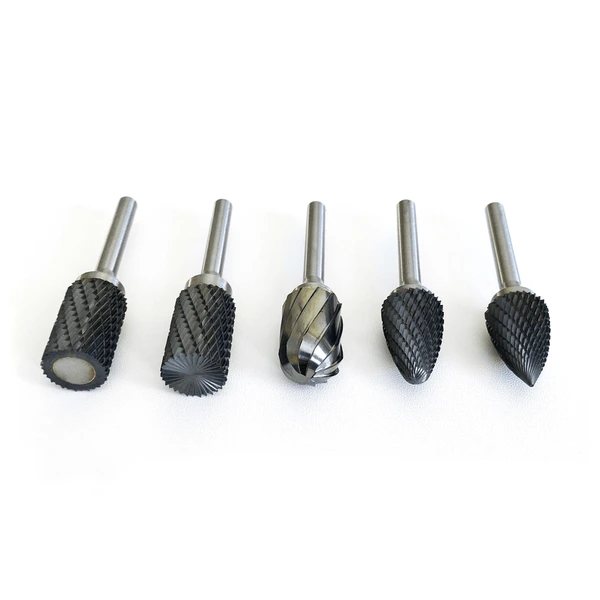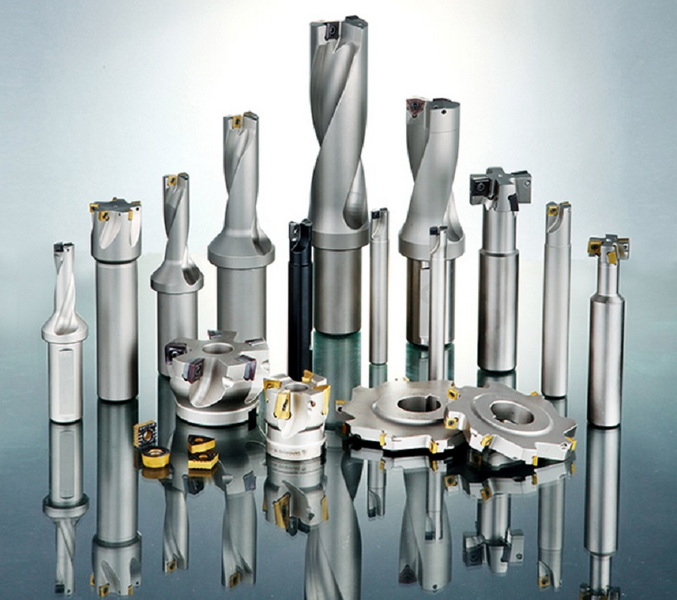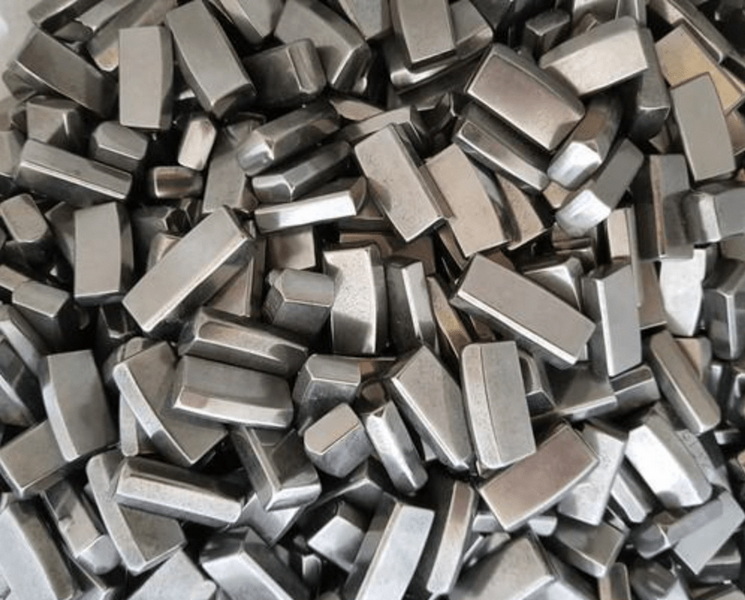Content Menu
● Introduction
● What Is Tungsten?
>> Key Properties of Tungsten
● What Is Tungsten Carbide?
>> Key Properties of Tungsten Carbide
● Chemical Structure and Composition
● Hardness and Wear Resistance
>> Mohs Hardness Scale
● Strength: Tensile, Compressive, and Flexural
>> Tensile Strength
>> Compressive Strength
>> Flexural Strength
● Brittleness and Toughness
>> Brittleness
>> Toughness
● Resistance to Heat and Corrosion
>> Heat Resistance
>> Corrosion Resistance
● Industrial and Commercial Applications
>> Tungsten
>> Tungsten Carbide
● Environmental Impact and Sustainability
>> Mining and Resource Considerations
>> Longevity and Recyclability
● Conclusion
● Frequently Asked Questions (FAQ)
>> 1. Is tungsten carbide harder than tungsten?
>> 2. Why is tungsten carbide more brittle than tungsten?
>> 3. Which is better for jewelry: tungsten or tungsten carbide?
>> 4. Can tungsten carbide be machined or reshaped?
>> 5. What are the main industrial uses of tungsten carbide?
● Citations:
When it comes to advanced materials prized for their strength, durability, and versatility, few substances attract as much attention as tungsten and tungsten carbide. These two materials are often mentioned in the same breath, yet their properties, applications, and even their definitions differ significantly. The question, “what is stronger: tungsten or tungsten carbide?” is more complex than it first appears. This comprehensive article will explore the science, structure, and real-world uses of both materials, breaking down their strengths and weaknesses, and helping you decide which is best for your needs.

Introduction
Tungsten and tungsten carbide are both renowned for their exceptional physical properties. However, while tungsten is a pure element, tungsten carbide is a compound that combines tungsten with carbon and, often, a metallic binder. Their unique characteristics make them indispensable in industries ranging from aerospace and mining to jewelry and electronics.
Understanding the differences between these materials is crucial for selecting the right one for your application. This article delves into their chemistry, mechanical properties, and practical uses, providing a clear answer to the question of which is stronger, and why.
What Is Tungsten?
Tungsten, symbolized as W on the periodic table, is a transition metal with an atomic number of 74. It is one of the densest elements, with a density of 19.3 g/cm³, and boasts the highest melting point of any metal at 3,422°C (6,192°F). Tungsten is hard, heavy, and highly resistant to corrosion.
Key Properties of Tungsten
- Color: Silvery-white, lustrous
- Density: 19.3 g/cm³
- Melting Point: 3,422°C (6,192°F)
- Electrical Conductivity: High
- Corrosion Resistance: Excellent
Tungsten's unique combination of density, hardness, and heat resistance makes it valuable in high-temperature environments and in applications where weight is an advantage, such as counterweights and radiation shielding.
What Is Tungsten Carbide?
Tungsten carbide (WC) is a chemical compound created by combining tungsten and carbon atoms in equal proportions. Most commercial tungsten carbide is produced by mixing tungsten powder with carbon and a binder (typically cobalt), then sintering the mixture at high temperatures.
Key Properties of Tungsten Carbide
- Color: Gray, metallic luster
- Density: 15.6–15.7 g/cm³
- Melting Point: 2,870°C (5,198°F)
- Hardness: Extremely high, near diamond
- Wear Resistance: Exceptional
Tungsten carbide is technically a ceramic, but it is often referred to as a “cemented carbide” due to the metallic binder that holds the grains together. This unique structure gives it a rare combination of hardness and toughness.
Chemical Structure and Composition
| Property | Tungsten (W) | Tungsten Carbide (WC) |
| Chemical Formula | W | WC |
| Crystal Structure | Body-centered cubic | Hexagonal |
| Density (g/cm³) | 19.3 | 15.6–15.7 |
| Melting Point (°C) | 3,422 | 2,870 |
| Main Components | Pure tungsten | Tungsten + Carbon (+ Binder) |
Tungsten's metallic bonding gives it ductility and toughness, while tungsten carbide's covalent bonds between tungsten and carbon atoms create a rigid, hard structure. The addition of a metallic binder like cobalt in tungsten carbide further enhances its toughness.
Hardness and Wear Resistance
Mohs Hardness Scale
- Tungsten: 7.5
- Tungsten Carbide: 9–9.5 (second only to diamond)
Tungsten carbide's hardness makes it incredibly resistant to scratching, abrasion, and deformation. This property is why it is the material of choice for industrial cutting tools, mining equipment, and wear-resistant coatings.
Strength: Tensile, Compressive, and Flexural
Tensile Strength
- Tungsten: ~550–620 MPa (varies with purity)
- Tungsten Carbide: 350–700 MPa (depends on binder and grain size)
Compressive Strength
- Tungsten: ~1,510 MPa
- Tungsten Carbide: 2,683–4,780 MPa
Flexural Strength
- Tungsten Carbide: Up to 1,830 MPa
| Strength Type | Tungsten (MPa) | Tungsten Carbide (MPa) |
| Tensile | 550–620 | 350–700 |
| Compressive | ~1,510 | 2,683–4,780 |
| Flexural | ~700 | 1,830 |
Tungsten carbide's compressive and flexural strengths are far superior to those of pure tungsten, making it ideal for applications where crushing forces are present.

Brittleness and Toughness
Brittleness
- Tungsten: More ductile, can absorb impacts
- Tungsten Carbide: Extremely hard but brittle; can chip or shatter on impact
Toughness
Toughness is a measure of a material's ability to absorb energy and deform without fracturing. Tungsten, being a metal, is more ductile and less likely to crack under impact. Tungsten carbide, while extremely hard, is more susceptible to brittle failure if struck sharply.
Resistance to Heat and Corrosion
Heat Resistance
Tungsten is famous for its high melting point and ability to retain strength at elevated temperatures, making it ideal for use in light bulb filaments and rocket nozzles. Tungsten carbide, while also heat-resistant, begins to degrade at temperatures above 1,000°C, especially in oxidizing environments.
Corrosion Resistance
Both materials are resistant to most acids and bases, but tungsten carbide can be more vulnerable to corrosion if the binder (like cobalt) is attacked by chemicals. Tungsten's corrosion resistance is more consistent across different environments.
Industrial and Commercial Applications
Tungsten
- Electrical filaments (light bulbs, electronics)
- X-ray tubes and radiation shielding
- Weights and counterbalances (aerospace, sports)
- Aerospace components
- High-temperature furnace parts
Tungsten Carbide
- Cutting tools (drills, saw blades, end mills)
- Mining and drilling equipment
- Industrial dies and punches
- Armor-piercing ammunition
- Abrasive media and wear-resistant coatings
- Jewelry (rings, bracelets)
Tungsten carbide's superior hardness and wear resistance make it invaluable in any application where abrasion or cutting is involved. Tungsten, with its higher density and ductility, is chosen for applications where weight and impact resistance are critical.
Environmental Impact and Sustainability
Mining and Resource Considerations
Both tungsten and tungsten carbide require mining of tungsten ore, which is energy-intensive and can have environmental impacts if not managed responsibly. Recycling rates for tungsten are increasing, especially in the tool and electronics industries, helping reduce the environmental footprint.
Longevity and Recyclability
Tungsten carbide tools last significantly longer than steel tools, reducing waste and the need for frequent replacements. Both tungsten and tungsten carbide can be recycled, and many manufacturers now offer recycling programs for used carbide tools and tungsten products.
Conclusion
In terms of hardness, wear resistance, and compressive strength, tungsten carbide is the clear winner. Its Mohs hardness of 9–9.5 and compressive strength up to 4,780 MPa make it ideal for cutting, drilling, and abrasion-resistant applications.However, tungsten is stronger in terms of ductility and impact resistance. Its ability to absorb energy without fracturing makes it preferable for applications involving heavy impacts or where some flexibility is required.Ultimately, the choice between tungsten and tungsten carbide depends on the specific demands of your application. If you need extreme hardness and wear resistance, choose tungsten carbide. If you require impact resistance and density, tungsten may be the better option.Both materials have their place in modern industry and technology, and understanding their differences ensures you select the right tool for the job.

Frequently Asked Questions (FAQ)
1. Is tungsten carbide harder than tungsten?
Yes, tungsten carbide is significantly harder than pure tungsten. On the Mohs scale, tungsten carbide rates 9–9.5, nearly as hard as diamond, while tungsten rates around 7.5.
2. Why is tungsten carbide more brittle than tungsten?
Tungsten carbide's extreme hardness comes at the cost of increased brittleness. Its ceramic-like structure resists deformation but is less able to absorb impacts, making it prone to chipping or fracturing under sudden force. Tungsten, being a metal, is more ductile and can withstand impacts better.
3. Which is better for jewelry: tungsten or tungsten carbide?
Tungsten carbide is generally preferred for jewelry due to its superior scratch resistance and ability to maintain a polished finish. However, its brittleness means it can crack or shatter if dropped on a hard surface, whereas pure tungsten is less likely to break but can scratch more easily.
4. Can tungsten carbide be machined or reshaped?
Tungsten carbide is extremely difficult to machine due to its hardness. It is usually shaped in its "green" (unsintered) state and then sintered to achieve its final hardness. Diamond-coated tools are required for machining finished tungsten carbide components.
5. What are the main industrial uses of tungsten carbide?
Tungsten carbide is widely used in industrial applications that require extreme hardness and wear resistance, such as cutting tools, mining equipment, dies, punches, and abrasion-resistant coatings. Its ability to maintain sharpness and structural integrity under high-stress conditions makes it indispensable in these fields.
Citations:
[1] https://cowseal.com/tungsten-vs-tungsten-carbide/
[2] https://www.linde-amt.com/resource-library/articles/tungsten-carbide
[3] https://www.allied-material.co.jp/en/techinfo/tungsten_carbide/features.html
[4] https://www.retopz.com/tensile-strength-in-the-tungsten-carbide-industry-an-explanatory-overview/
[5] https://cncpartsxtj.com/cnc-materials/difference-tungsten-and-tungsten-carbide/
[6] https://www.retopz.com/57-frequently-asked-questions-faqs-about-tungsten-carbide/
[7] https://www.makeitfrom.com/material-properties/Tungsten-Carbide-WC
[8] https://en.wikipedia.org/wiki/Tungsten_carbide
[9] https://konecarbide.com/tungsten-vs-tungsten-carbide-differences-explained/
[10] https://va-tungsten.co.za/pure-tungsten-vs-tungsten-carbide-whats-the-difference/
[11] https://www.aemmetal.com/news/tungsten-vs-tungsten-carbide-guide.html
[12] https://www.britannica.com/science/tungsten-carbide
[13] https://shop.machinemfg.com/tungsten-vs-tungsten-carbide-key-differences/
[14] https://www.imetra.com/tungsten-carbide-material-properties/
[15] https://www.tungstenmetalsgroup.com/blog-blog/pure-tungsten-vs-tungsten-alloys
[16] https://www.ihrcarbide.com/news/hardness-of-tungsten-carbide/
[17] https://www.zgjrdcc.com/tungsten-vs-tungsten-carbide/
[18] https://www.azom.com/properties.aspx?ArticleID=1203
[19] https://en.wikipedia.org/wiki/Tungsten
[20] https://www.bangerter.com/en/tungsten-carbide
[21] https://stock.adobe.com/search?k=tungsten+carbide
[22] https://cowseal.com/tungsten-vs-tungsten-carbide/
[23] https://www.shutterstock.com/search/%22tungsten-carbide%22?page=3
[24] https://www.freepik.com/free-photos-vectors/tungsten-metal/8
[25] https://en.wikipedia.org/wiki/Tungsten_carbide
[26] https://stock.adobe.com/search?k=carbide
[27] https://www.gettyimages.hk/%E5%9C%96%E7%89%87/tungsten-metal
[28] https://www.stevengdesigns.com/blogs/news/the-difference-between-tungsten-and-tungsten-carbide
[29] https://www.shutterstock.com/search/tungsten
[30] https://www.gettyimages.hk/%E6%8F%92%E5%9C%96/tungsten-metal
[31] https://forums.tripwireinteractive.com/index.php?threads%2Ftungsten-vs-tungsten-carbide.101174%2F
[32] https://stock.adobe.com/search?k=tungsten
[33] https://www.tungstenworld.com/pages/tungsten-vs-tungsten-carbide
[34] https://www.tungstenworld.com/pages/tungsten-news-common-questions-about-tungsten
[35] https://www.embr.com/blogs/news/what-does-tungsten-vs-tungsten-carbide-really-mean
[36] https://tuncomfg.com/about/faq/
[37] https://www.thermalspray.com/how-to-distinguish-real-tungsten-carbide-from-fakes/
[38] https://www.tungstenrepublic.com/Tungsten-Carbide-Rings-FAQ.html
[39] https://www.carbide-products.com/blog/tungsten-carbide-and-hss/
[40] https://va-tungsten.co.za/exploring-pure-tungsten-vs-tungsten-carbide-a-comprehensive-guide/
[41] https://www.carbidetek.com/faqs/
[42] https://etrnl.com.au/blogs/news/answering-all-of-your-questions-about-tungsten-rings
[43] https://www.menstungstenonline.com/Differences-between-Tungsten-and-Tungsten-Carbide-Rings.html
[44] https://www.tungstenringsco.com/blog/2023/06/tungsten-vs-diamond/
[45] https://www.istockphoto.com/photos/tungsten-carbide
[46] https://www.gettyimages.hk/%E5%9C%96%E7%89%87/tungsten-carbide?page=2
[47] https://www.istockphoto.com/photos/carbide
[48] https://periodictable.com/Elements/074/pictures.html
[49] https://www.istockphoto.com/photos/tungsten-metal
[50] https://www.freepik.com/free-photos-vectors/tungsten-carbide
[51] https://www.istockphoto.com/photos/tungsten
[52] https://www.carbide-part.com/blog/carbide-vs-tungsten-carbide/
[53] https://www.tungco.com/insights/blog/frequently-asked-questions-used-tungsten-carbide-inserts/
















